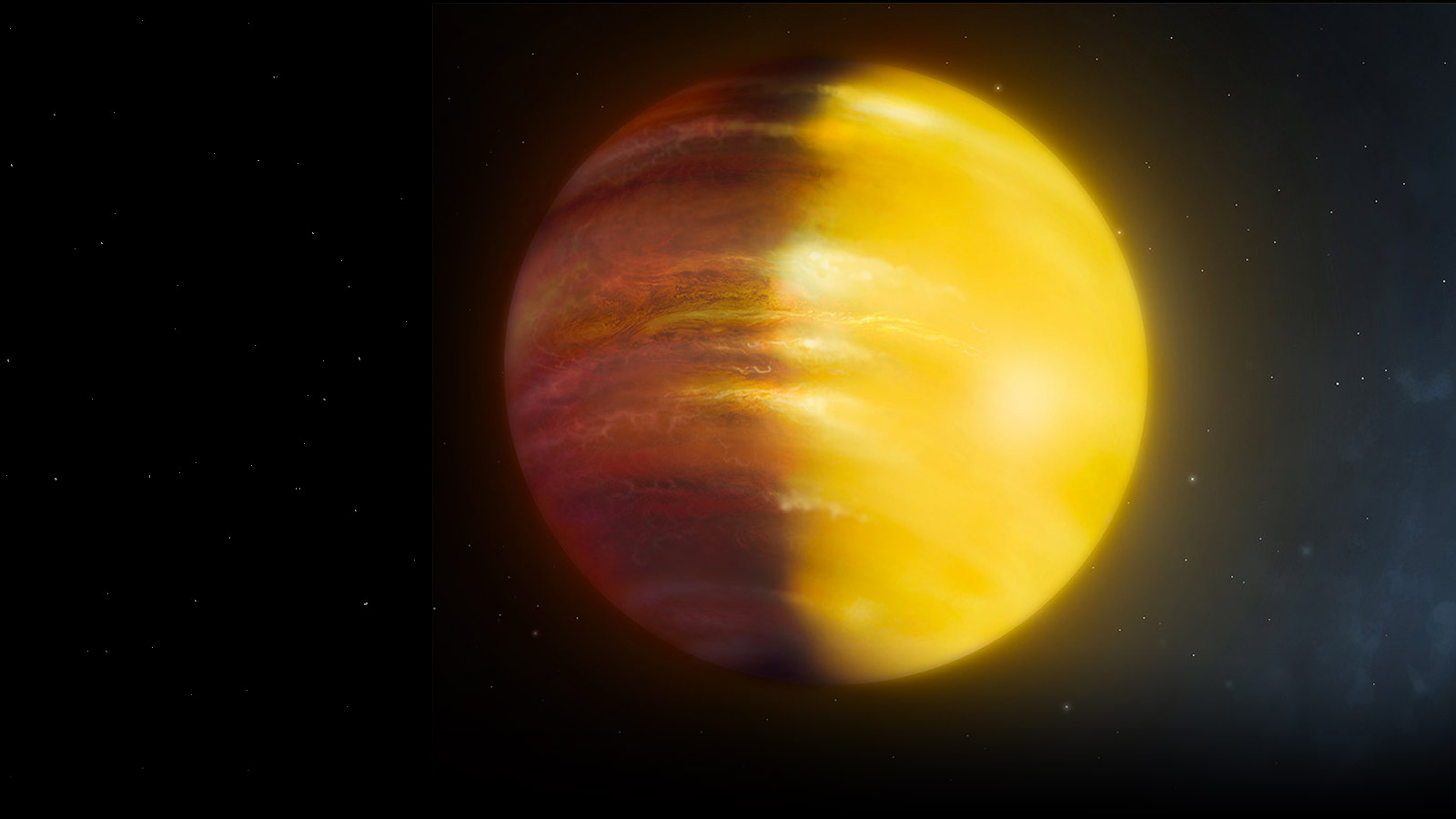The Basics
A gas giant is a large planet mostly composed of helium and/or hydrogen. These planets, like Jupiter and Saturn in our solar system, don’t have hard surfaces and instead have swirling gases above a solid core. Gas giant exoplanets can be much larger than Jupiter, and much closer to their stars than anything found in our solar system.
For most of human history our understanding of how planets form and evolve was based on the eight planets in our solar system. But over the last 25 years, the discovery of more than 5,600 exoplanets, or planets outside our solar system, changed all that.
Gas giants, like Jupiter or Saturn in our solar system, are composed mostly of helium and/or hydrogen. Gas giants nearer to their stars are often called “hot Jupiters.” More variety is hidden within these broad categories. Hot Jupiters, for instance, were among the first exoplanet types found – gas giants like Jupiter, yes, but orbiting so close to their stars that their temperatures soar into the thousands of degrees (Fahrenheit or Celsius). These large planets make such tight orbits that they cause a pronounced “wobble” in their stars, tugging their stellar hosts this way and that, and causing a measurable shift in the spectrum of light from the stars. That made hot Jupiters easier to detect in the early days of planet hunting using the radial velocity method.
Similar in size to Jupiter, these gas-dominated planets orbit extremely close to their parent stars, circling them in as few as 18 hours. We have nothing like them in our own solar system, where the closest planets to the Sun are rocky and orbiting much farther away. The questions about hot Jupiters are as big as the planets themselves: Do they form close to their stars or farther away before migrating inward? And if these giants do migrate, what would that reveal about the history of the planets in our own solar system?
To answer those questions, scientists will need to observe many of these hot giants very early in their formation. The detection of the exoplanet HIP 67522 b, thought to be the youngest hot Jupiter ever found (in June 2020), could expand our understanding. It orbits a well-studied star that is about 17 million years old, meaning the hot Jupiter is likely only a few million years younger, whereas most known hot Jupiters are more than a billion years old. The planet takes about seven days to orbit its star, which has a mass similar to the Sun's. Located only about 490 light-years from Earth, HIP 67522 b is about 10 times the diameter of Earth, or close to that of Jupiter. Its size strongly indicates that it is a gas-dominated planet.
The discovery offers hope for finding more young hot Jupiters and learning more about how planets form throughout the universe.
5 Key Gas Giant Facts
(with artists' concepts of these alien worlds)
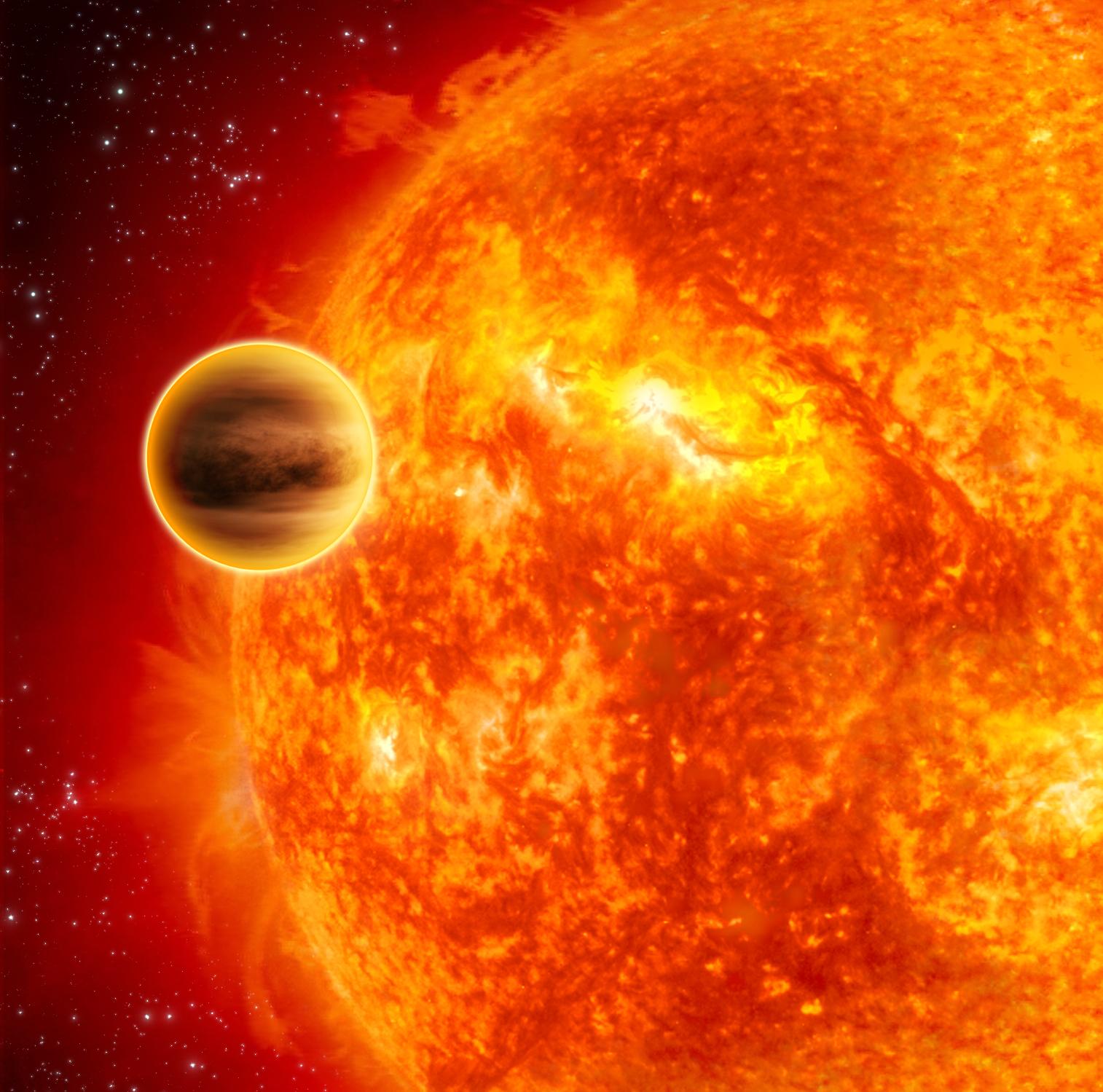 01
01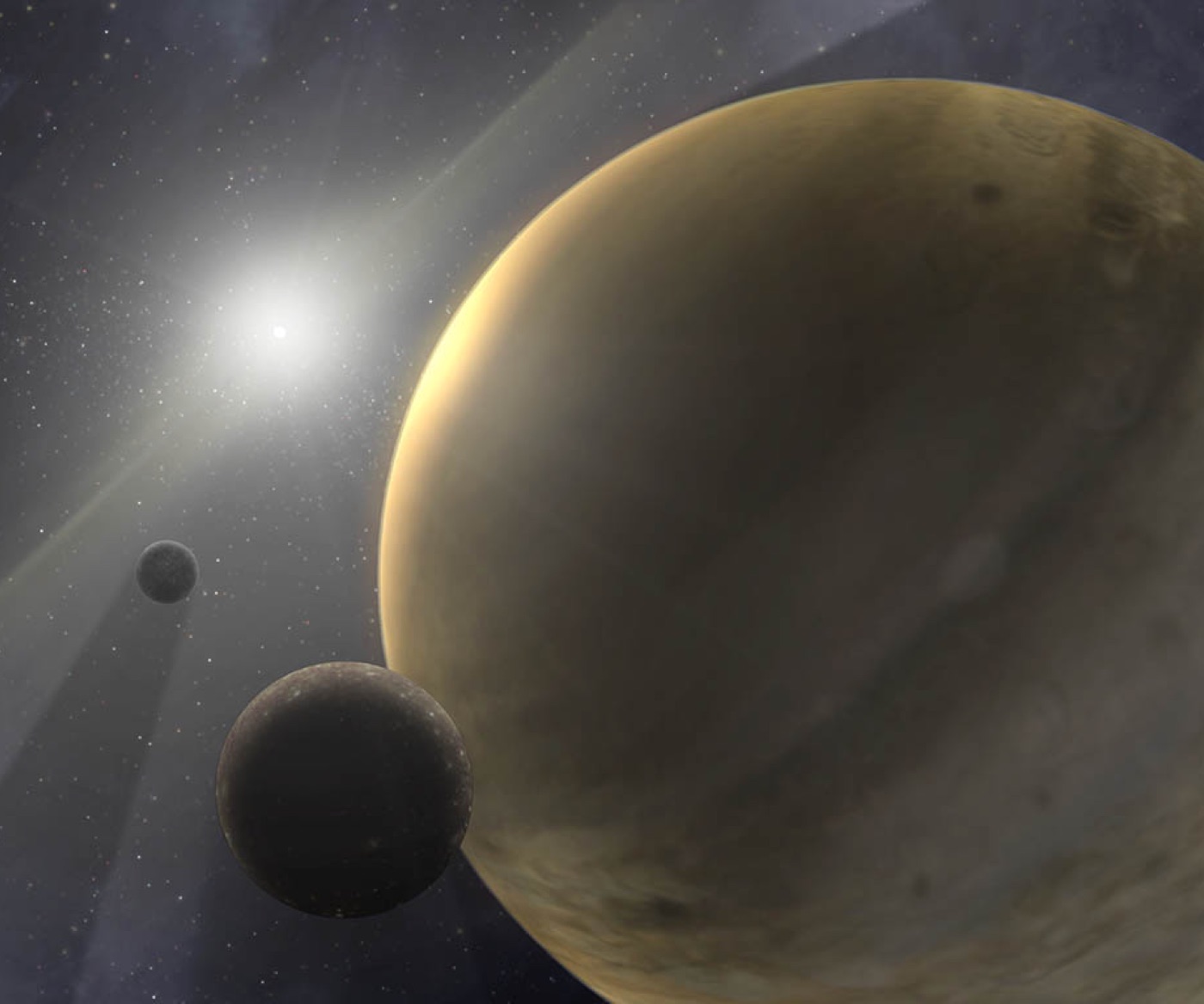 02
02Deadline pressure
It is thought they form within the first 10 million years of a Sun-like star's life…or not at all.
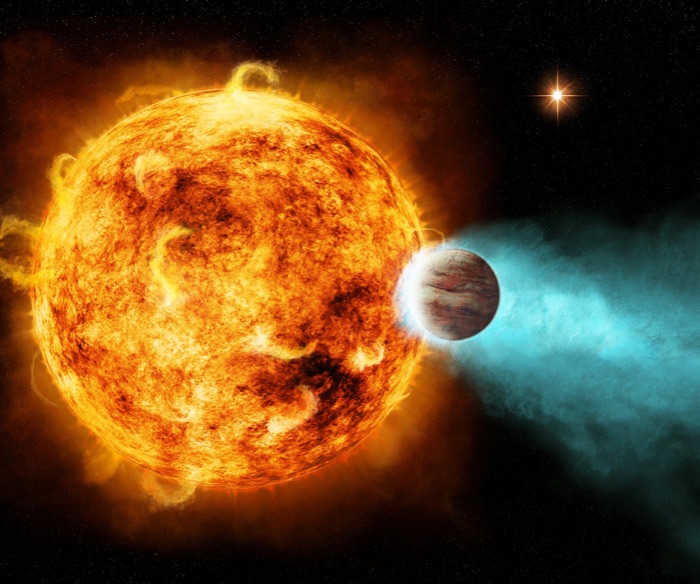 03
03Hot, hot, hot
Hot Jupiters orbit so close to their stars that their temperatures soar into the thousands of degrees.
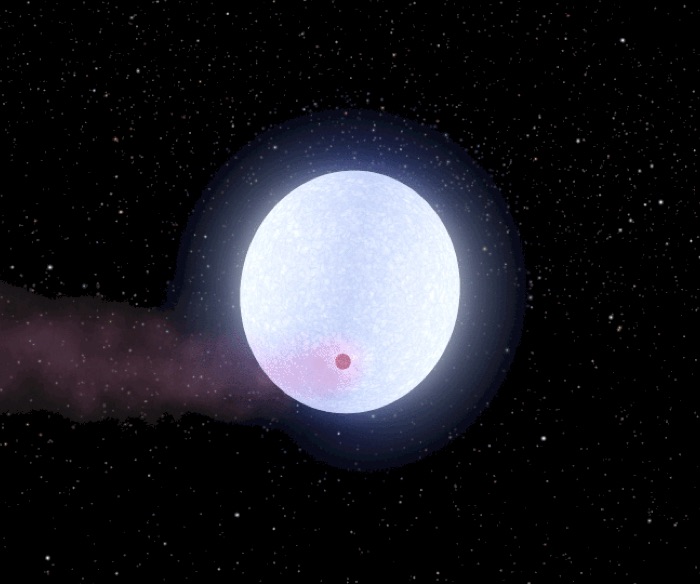 04
04And hottest of all
KELT-9 b, the hottest gas giant found so far, is hotter than most stars.
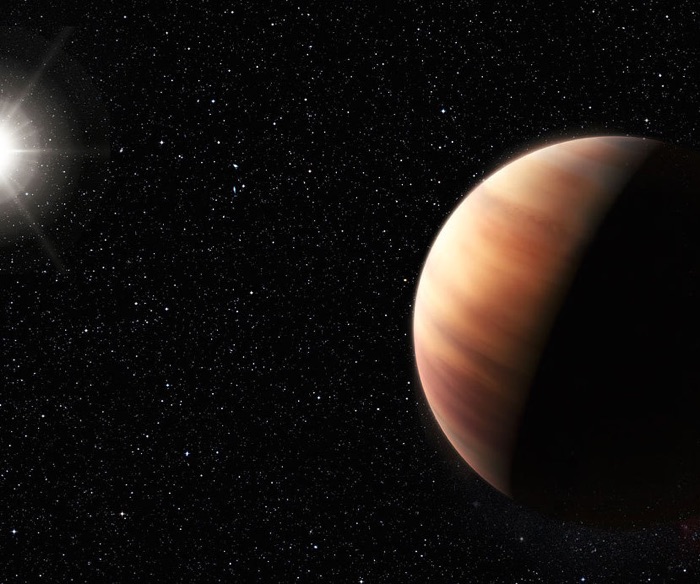 05
05
Migrating Giants?
There are three main hypotheses for how hot Jupiters get so close to their parent stars. One is that they simply form there and stay put. But it's hard to imagine planets forming in such an intense environment. Not only would the scorching heat vaporize most materials, but young stars frequently erupt with massive explosions and stellar winds, potentially dispersing emerging planets.
It could be more likely that gas giants develop farther from their parent star, past a boundary called the snow line, where it's cool enough for ice and other solid materials to form. Jupiter-like planets are composed almost entirely of gas, but they contain solid cores. It would be easier for those cores to form past the snow line, where frozen materials could cling together like a growing snowball.
The other two hypotheses assume this is the case, and that hot Jupiters then wander closer to their stars. But what would be the cause and timing of the migration?
One idea posits that hot Jupiters begin their journey early in the planetary system's history while the star is still surrounded by the disk of gas and dust from which both it and the planet formed. In this scenario, the gravity of the disk interacting with the mass of the planet could interrupt the gas giant's orbit and cause it to migrate inward.
The third hypothesis maintains that hot Jupiters get close to their star later, when the gravity of other planets around the star can drive the migration. The fact that HIP 67522 b is already so close to its star so early after its formation indicates that this third hypothesis probably doesn't apply in this case. But one young hot Jupiter isn't enough to settle the debate on how they all form.
Developing with the stars
In 2007, astronomers using NASA's Spitzer Space Telescope found evidence showing that gas-giant planets form quickly, within the first 10 million years of a Sun-like star's life.
Gas giants could get their start in the gas-rich debris disk that surrounds a young star. A core produced by collisions among asteroids and comets provides a seed, and when this core reaches sufficient mass, its gravitational pull rapidly attracts gas from the disk to form the planet.
Scientists using Spitzer and ground-based telescopes searched for traces of gas around 15 different Sun-like stars, most with ages ranging from 3 million to 30 million years. With the help of Spitzer's infrared spectrometer instrument, they were able to search for relatively warm gas in the inner regions of these star systems, an area comparable to the zone between Earth and Jupiter in our own solar system. They also used ground-based radio telescopes to search for cooler gas in the outer regions of these systems, an area comparable to the zone around Saturn and beyond.
All of the stars in the study, including those as young as a few million years, have less than 10 percent of Jupiter's mass in gas swirling around them. This indicates that gas giant planets like Jupiter and Saturn have already formed in these young planetary systems, or they never will.
Explore the planet types: Gas Giant, Neptune-like, Super-Earth and Terrestrial
Or move on to the building blocks of galaxies: stars!
More to Explore
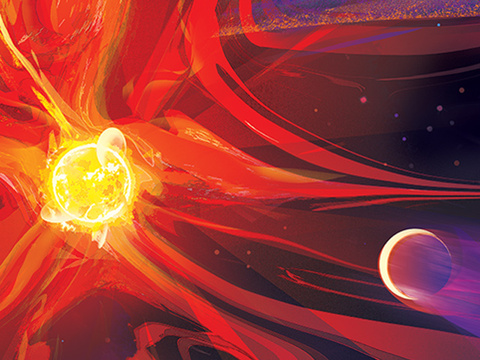
Flares of Fury Poster
Located less than 32 light-years from Earth, AU Microscopii is among the youngest planetary systems ever observed by astronomers, and its star throws vicious temper tantrums!

Llamaradas de Furia
Ubicado a menos de 32 años luz de la Tierra, AU Microscopii se encuentra entre los sistemas planetarios más jóvenes jamás observados por los astrónomos, ¡y su estrella tiene unas brutales rabietas!

Rains of Terror Poster
This far-off blue planet may look like a friendly haven – but don’t be deceived! Weather here is deadly. The cobalt color comes from a hazy, blow-torched atmosphere containing clouds laced with glass.

Lluvia de Terror
Este planeta lejano puede parecer un refugio amigable… ¡pero no te dejes engañar! ¡El clima en este mundo es mortal! ¡El color azul cobalto del planeta proviene de una atmósfera brumosa e incendiaria que contiene nubes de cristales de vidrio!

